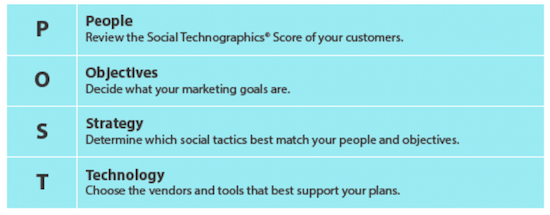As Forrester researcher Nate Elliott indicates “Interactive marketers know they’re not good at measuring the effectiveness of social media. On average, they rate their own efforts to measure social initiatives at only 4.5 out of 10. Marketers fail because they focus on the metrics that are most easily available instead of the metrics that best correspond to the objectives they’re pursuing.”
Calibrero distinguishes between SMM (Social Media Marketing) events and SMM responses. In this dichotomy, the first category encompasses all kind of activities undertaken by a social community, triggered by or in (e-)dialogue with a brand such as comments, blogposts, (re)tweets, video messages and so on. However valuable this spin-off may be, it can never be an objective in its own right. The latter category of SMM responses comprises those responses with financial impact, i.e. commercial leads that can be nurtured and converted to contracts, into invoices and subsequently into revenue and cashflow.
Setting the Social Media hype aside for a moment and applying a healthy dosis of down-to-earth thinking to this fascinating topic, I wonder why social media bloggers, 2.0 gurus and the like only too often seem to dismiss the proven lessons of marketing and sales. As Forrester’s easy-to-understand POST approach stipulates, (social media) tools should always preceded by a clear definition of target audience (People), objectives and strategies. Yet some social media strategists prefer to talk the language of ‘number of followers, friends, comments’.
Now have a look at this CMO guide to the social media landscape. Granted, it provides a colourful insight into the relative benefit some of the most well-known social media brings, and therefore provides some indication of the weight the Marketing Director or CMO should place on leveraging these tools. Yet, the matrix fails to refer to real commercial objectives such as increased pipeline, conversion rate and enhanced sales. Social Media Marketing is expected to dominate this year — so much so that 81% of CMOs plan to link their annual revenues to their social media investment, according to a recent survey by The CMO Club and Bazaarvoice. I wonder though whether the CMO him- or herself will want to get down to the tool level in gauging the merits of ‘going social’. Furthermore, with this significant intended shift in budget, resources and commitment to occur, the CMO guide should ideally be leading the way to drive a tangible return or ROI.
Perhaps this explains why there’s still little awareness or understanding by senior executives as to the real benefits of Social Media Marketing. As my recent, non-academic and by no means representative (with a modest n= 22) LinkedIn poll suggests, none of the 55 & older respondents expect to benefit from social media this year yet. The B2B poll also suggests there is a relationship between company size and perceived social media benefit. Large companies apparently are represented by the 55+ segment, indicating they see no benefit yet. Mid-sized players expect to gain from social media deployment in terms of better knowledge management and innovation whilst smaller companies place their bets on lead generation thru the power of 2.0. Food for further social media thought.


Leave a Reply
Want to join the discussion?Feel free to contribute!